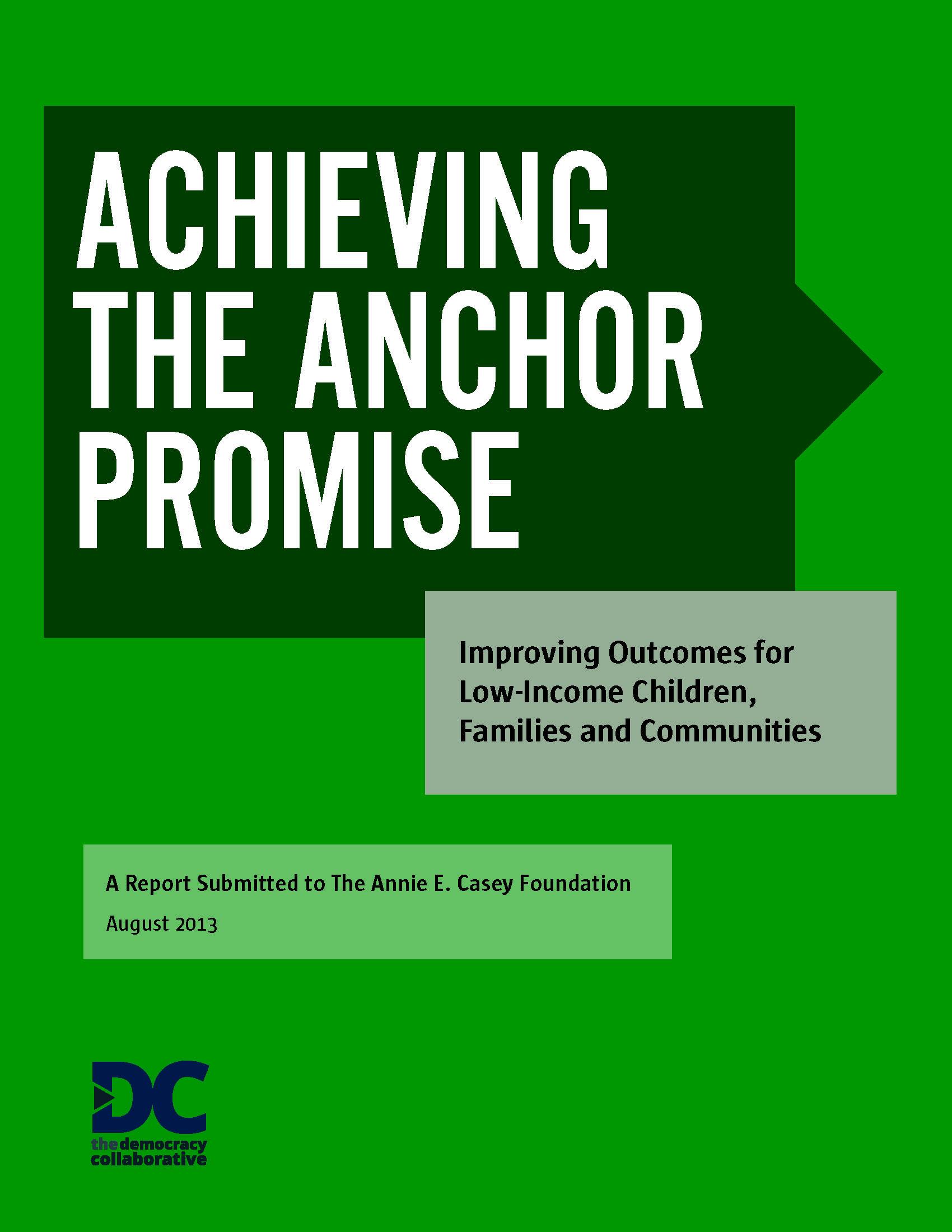This report, the companion to our The Anchor Dashboard: Aligning Institutional Practice to Meet Low-Income Community Needs, presents the research behind the framework we have designed to assist anchor institutions in measuring their community impact.
Anchor institutions are enterprises such as universities and hospitals that are rooted in their local communities by mission, invested capital, or relationships to customers, employees, and vendors. All told, U.S. hospitals and universities combined spend over $1 trillion a year, have endowments in excess of $500 billion, and employ 8 percent of the labor force.
Many anchor institutions regularly report on community programming and activities. Some go even further and seek to pursue an anchor mission—making a commitment to consciously apply their place-based economic power, in combination with their human and intellectual resources, to better the long-term welfare of the communities in their regions. Yet, to date, few tools exist to help institutions reflect on and broadly assess the long-term impact of their anchor-mission activities, and particularly their impact on low-income communities.
This Democracy Collaborative research report aims to move the conversation from “programs” to “impact”—and specifically to the critical matter of how to deliver measurable benefits to low-income children, families, and communities. Using focused in-depth interviews conducted with more than 75 individuals from a wide range of positions, including hospital and university administrators, partnership center directors, national nonprofit organization leaders, federal officials, and community activists, Achieving the Anchor Promise offers insight into the needs of both communities and institutions, and, ultimately, identifies a set of indicators that can be used to assess community conditions and institutional effort.
Achieving the Anchor Promise broadly surveys the field and outlines the benefits of existing partnerships and leading “best practices,” as well as the challenges, from anchor institution and community perspectives. Despite vast differences in vantage point, considerable agreement is found on what areas are most important to prioritize in measuring and communicating anchor institution efforts and intention. A useful tool for community groups, researchers, students, and anchor institutions themselves, Achieving the Anchor Promise deepens our understanding of what it means for hospitals or universities to say they are pursuing an anchor institution mission and how this work can best be shaped to benefit their surrounding communities.
